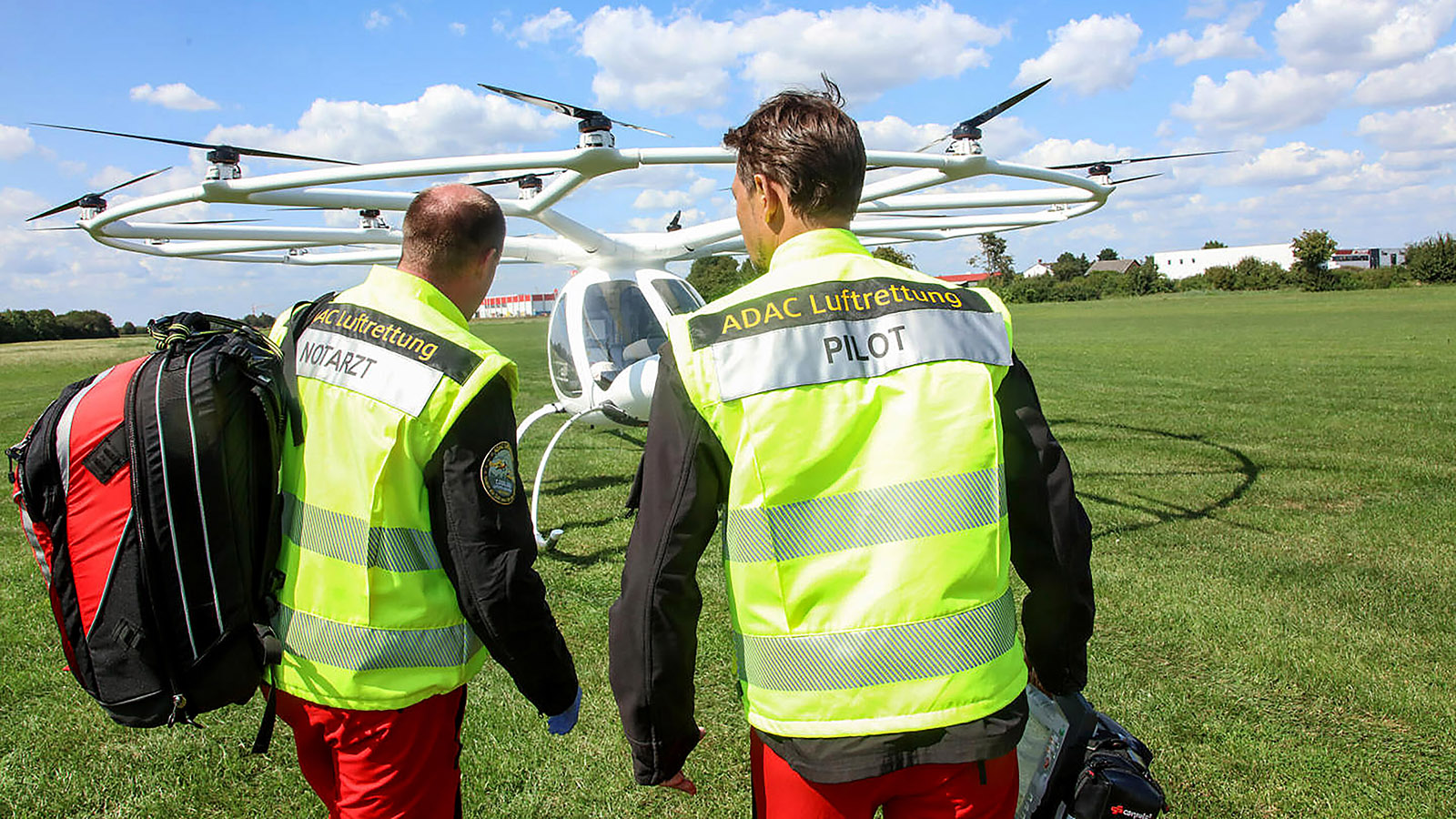Stay Up to Date
Submit your email address to receive the latest industry and Aerospace America news.
In a medical emergency, there might be only eight minutes to deliver initial aid before a patient dies or incurs brain damage from lack of oxygen.
In rural locations, conventional helicopters are often the only way to reach victims within that precious window, but many areas lack access to them. Likewise, in urban settings, a conventional helicopter might not be available to whisk a medical worker over a traffic jam or have enough clearance to land and take off.
These issues have prompted many electric aircraft developers to view medical response as a potential market for their vehicles, which will have a smaller footprint than conventional helicopters. In such cases, a medical worker would be rushed to the scene with a defibrillator and other equipment to stabilize the patient until an ambulance arrives to take the person to the hospital, if necessary.
Among those companies is LIFT Aircraft of Texas, whose single-person Hexa multicopter is designed to travel 16.7 kilometers in 17 minutes, propelled by 18 rotors.
“This is 2023, and people are dying merely because we can’t reach them fast enough. But we have the technology now,” Kevin Rustagi, LIFT’s chief commercial officer, told me in December.
Hexa is an ultralight, meaning that workers in the U.S. would not need a pilot license to operate one, just the training required under FAA’s Public Aircraft Operations rule. LIFT indicates on its website that in addition to carrying medical workers, its aircraft could rush police, firefighters, rescue and disaster response workers to a scene.
Another company, Jump Aero of California, has designed a single-person electric aircraft specifically for medical response, with a goal of maximizing the distance that can be covered in eight minutes. That focus on rapid response “resulted in an aircraft highly differentiated from the rest of the emerging electric industry,” says founder Carl Dietrich.
The unique design of the planned single-seat JA1 Pulse, Dietrich says, is a “biplane standing tailsitter,” meaning it stands upright on its tail when on the ground. Each of the JA1’s eight rotors are designed to spin up in less than 60 seconds and propel the aircraft anywhere in a 50-kilometer radius in under eight minutes. So far, Jump has flown small, subscale demonstrators, but plans call for flying a larger one this year, with a 1.2-meter wingspan. The planned production model’s wingspan would be 5.8 meters.
In contrast to the Hexa, each JA1 medical worker/pilot in the U.S. would have to be trained as a pilot under FAA’s light sport category. For quick takeoffs, pilots will wear a harness that snaps into the cockpit seat, which will have the pilot in an upright, standing position for takeoff. After rising vertically, the JA1 will tilt on its side to transition to forward flight, meaning the pilot will be lying prone on the cockpit bench, staring at the ground through a large window. This process is reversed for landing, and Dietrich says the configuration “enables us to land on almost any unimproved surface.”
Meanwhile, in Germany, air taxi developer Volocopter and ADAC Luftrettung, a Munich-based rescue company, plan to conduct research this year toward carrying doctors to emergency scenes aboard VoloCity multicopters that will be painted with the yellow ADAC branding. ADAC has agreed to purchase two of the two-seat VoloCity air taxis, with an option to buy another 150. The VoloCity, also with 18 rotors, has a cruise speed of 90 kilometers per hour and a top range of 65 kilometers. A pilot and a first responder could team up for medical missions.
Volocopter says on its website that urban areas are a focus for these planned research flights because dense traffic is among the factors that “contribute to delayed [emergency medical] response times.”
About paul brinkmann
Paul covers advanced air mobility, space launches and more for our website and the quarterly magazine. Paul joined us in 2022 and is based near Kennedy Space Center in Florida. He previously covered aerospace for United Press International and the Orlando Sentinel.
Related Posts
Stay Up to Date
Submit your email address to receive the latest industry and Aerospace America news.




